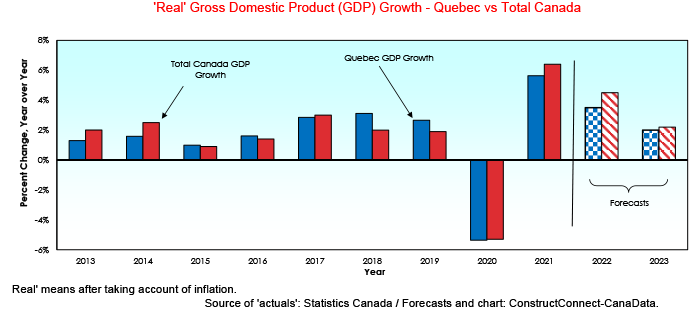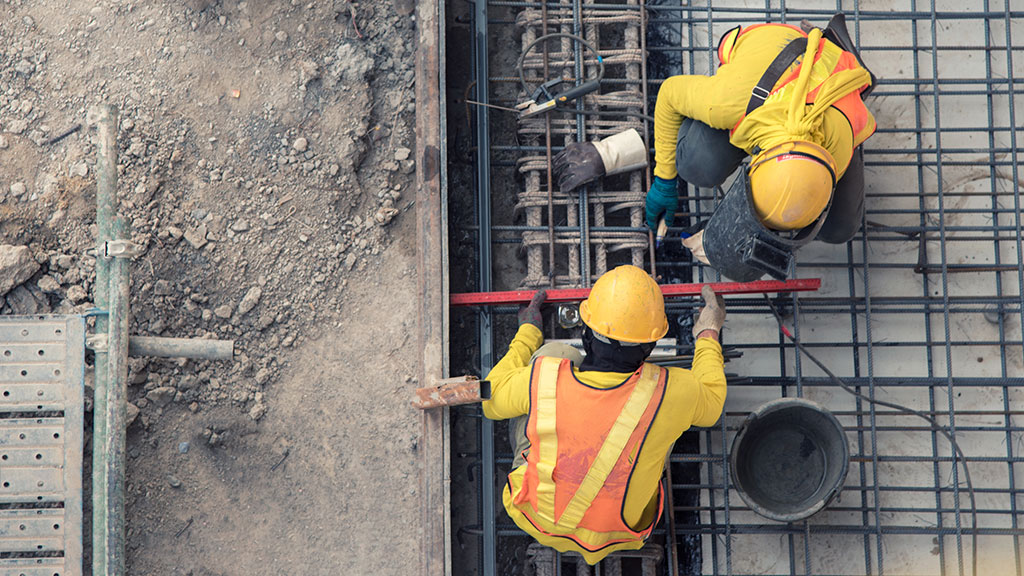Against a background of darkening prospects for Canada and the global economy, Quebec’s economic pulse appears quite strong approaching the second half of the year. From an external perspective, the province’s U.S. exports have increased by +17% year to date and are largely responsible for Quebec’s total exports being +10.4% versus 2021. Just under half (43%) of the increase has been due to a strong pickup in exports of unwrought aluminum. Consistent with the strong growth of exports, manufacturing sales year to date are ahead by +19%, more than five times the +3.5% rise in sales in the comparable period before 2020.
Record low unemployment despite strong net migration
Other standout statistics on the Quebec economy relate to labour demand. Over the past 12 months, total employment in Quebec has increased by +143,000 jobs while the unemployment rate has tumbled from 6.5% to a record low 3.9%, the tightest in the country. The province’s strong appetite for labour is highlighted by its jobs vacancy rate which has averaged 5.6% over the past year, second only to British Columbia’s 5.9%, and well above the national average of 4.9%.
Low-interest rates and strong employment bode well for near term spending
Fuelled by sustained strong employment growth, low interest rates and a post-covid surge in consumer confidence, consumer spending in the 12 months to February of this year was up by +18.3% versus the same period a year earlier. This gain, the second largest in the country, was driven mainly by a 92.8% jump in sales of motor vehicles.
Going forward, the recent solid 13-point gain in the Conference Board in Canada’s Index of Consumer Confidence suggests that, in the near term, consumers will continue to make a positive contribution to growth. Looking further ahead, the outlook for consumer spending is overshadowed by: (1) the Bank of Canada’s pending interest rate hikes; and (2) the erosion of real disposable incomes due to higher food and energy prices.
Low inventories of singles & multiples will keep pressure on house prices
While the recent increase in interest rates will sideline some first-time homebuyers, three recent indicators suggest housing demand remains strong approaching the middle of the year. First, the number of months’ supply of existing homes for sale, at 2.7, indicates a shortage of new listings. Second, the number of newly completed and unoccupied homeowner and condominium dwellings units is at a ten-year low.
Finally, although the increase in the average house price in Quebec, currently at +14.7% y/y, has retreated from its high of +30% y/y in mid-2021, it is still above the national average of +11.2%.
Despite these indicators of strong demand, Quebec housing starts reverted early this year. So far in 2022, they have declined by -29%, due to double-digit percentage-change retreats in all four types of dwellings (singles -40%; semis, -26%; row, -38%; and apartments, -26%). Given this subpar early performance, we expect starts for full year 2022 to total in the range of 55,000 to 58,000 units and to be knocked down further to 45,000 units in 2023.
Public Sector Projects Give Non-Res Construction a Big Boost in 2022
The outlook for non-residential construction in Quebec appears brighter than for the major elements of domestic demand, as noted above. Over the past six months, applications to build non-residential projects are up by +43% compared to the same period a year ago.
Statistics Canada’s Non-Residential Capital and Repair Survey reports the value of public and private non-residential construction is expected to total a record $53.1 billion in 2022, up +11.8% from an estimated $47.5 billion in 2021. Capital spending in the public sector is projected to grow by +15.1%, outpacing an anticipated +8.5% rise in private sector spending.
Major projects which should contribute to this increase include the extension of the Blue Line (Line 5) of the Montreal Subway Network, the Place du Portage Phase III Renewal, and the Saint-Michel-des-Saints Graphite Mine project. In 2022, clean energy projects are expected to contribute just under 12% to the increase in total non-residential capital spending. Examples include the Apuiat Wind Farm and the Varennes Carbon Recycling Biofuel project.
Bottom Line
The present good times in Quebec are under some duress. The indirect negative impact of higher U.S. interest rates on demand for Quebec’s exports and the depressing effect of higher Canadian interest rates on consumer spending and residential construction will likely intensify during the second half of this year and throughout 2023.



Recent Comments